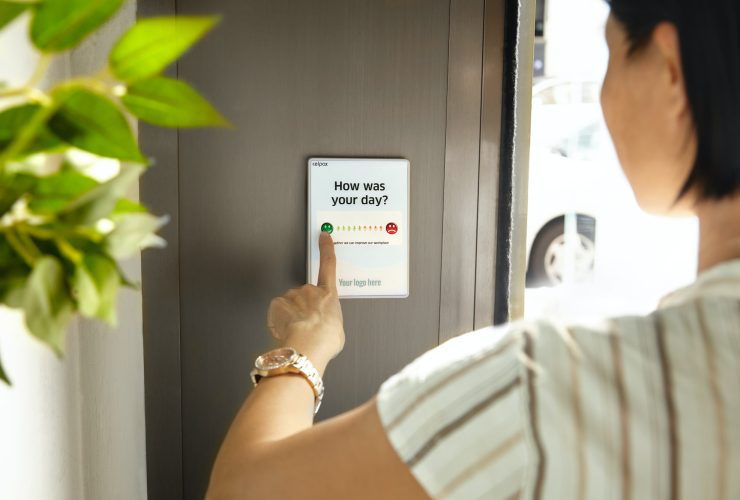SEO vs. Google Ads: Which is Better?
Ranking #1 on Google with a smart SEO strategy is one of the most powerful ways to attract new patients to your practice, but it can take time to see results. What should you do when you need to fill your patient pipeline right away? Today, we’ll compare SEO to Pay Per Click Advertising on Google Ads and show you which might be the best way to start growing your practice – fast.
Episode Transcript
What’s up everybody, and welcome to another episode of the Medical Marketing Podcast from Messenger – the show where we give you actionable tips and advice to help improve your practice marketing, grow your revenue, and take patient experience to the next level. I’m your host, Crawford Ifland, and today we’re going to be discussing some similarities and differences between SEO and Pay Per Click advertising on Google Ads.
Before we dive in, a word about Pay Per Click advertising. If you’re not familiar with PPC advertising before, these are simply the first few results you see in Google – usually with the label “ad” written next to them. Advertisers “bid” on certain keywords they’d like their ads to appear on, and are entered into an auction to determine which advertiser’s ads appear. When you click on one of these ads, the advertiser is charged a certain amount based on the keyword they have bid on. This is how companies like Google and Facebook make the vast majority of their money – it’s a huge market.
There are platforms other than Google out there, but Google captures somewhere around 92% of the search market. They’re so big that it doesn’t make sense to forgo Google in favor of advertising on other platforms. And besides, the concepts are the same regardless of which platform you choose…so when we refer to Google Ads, we’re talking more broadly about PPC advertising in general.
So, let’s talk about some similarities between SEO and Google Ads.
Similarities
First off, both SEO and PPC advertising are incredibly effective strategies to grow your practice. If you’ve engaged in a long-term SEO campaign, it can give your practice a strong competitive advantage over other practices in your market who haven’t put in the time and the effort. 32% of all clicks on Google go to the #1 spot, and less than 1% of people click on a result on Page2…so being at the top of Page 1 is incredibly important.
Google Ads, on the other hand, is a great way to get super-targeted conversions. While some people have ad blockers installed, the vast majority of patients click on the first relevant result they see – and Google Ads allows you to create very specific campaigns to deliver your patients a very targeted experience.
Another similarity is that both SEO and Google Ads require strategic implementation. You can’t build a successful campaign in an “ad hoc” way – each requires a thoughtful strategy to determine how you’re going to get to where you want to be.
With SEO, you need to be targeting the right keywords that have enough search volume to move the needle for your practice, but are also easy enough to rank for. Otherwise, you’ll be wasting a lot of time on keywords that you don’t have a chance to rank for – and that time could be better spent elsewhere.
With Google Ads, there’s a lot more than time at stake. Because you’re spending money on the ads themselves, the opportunity cost is greater – and nobody wants to see money poured down the drain. Without a smart, strategic plan in place to make the most of your advertising budget, not only will you not see results, but you’ll be spending more than is necessary in the process, too.
The final similarity between these two marketing strategies is that both require constant monitoring to ensure their maximum effectiveness. SEO is a long term play, but this is especially true for Google Ads. If you’re not continually checking in on your metrics and performance, you could be leaving potential profit on the table. Far better to stay on top of your efforts – both with SEO and Google Ads – to know what’s working, what isn’t, and what you can do to improve.
Next up, let’s look at some differences between SEO and Google Ads that will help you decide which is most effective for your business.
Differences
The first difference between SEO and Google Ads is timeframe – SEO takes a long time and a lot of sustained effort to see results, while Google Ads can start delivering results immediately. Depending on your keyword mix, it can take anywhere betweeen 3-6 months to start seeing results with SEO, while we’ve seen clients get new patient leads within hours of setting up their accounts.
But just because PPC advertising can deliver immediate results, don’t assume that it’s the only place you should look to get a competitive advantage. That’s because SEO is a much longer-term play. If you earn a good reputation in the eyes of Google with a smart, targeted SEO campaign, it’s incredibly hard for your competitors to knock you off your rankings. Contrast this with Google Ads, where you’re in constant competition with your competitors.
Google Ads works in an action format – and this auction happens every time a potential patient types a keyword into Google. Google looks at the quality of your ads, your website, and your keywords to determine how relevant your ads are to the user’s search term. They come up with a Quality Score, which is multiplied by the maximum amount you’re told Google that you’re willing to spend to acquire a new patient. The advertiser with the highest number wins the top spot in Google Ads, and the patient is most likely to click on their ad. In this way, PPC is incredibly competitive each and every time a patient turns to Google, while changes in SEO happen more gradually.
Finally, there’s the issue of money. SEO isn’t free – it takes a lot of time and effort to move the needle. But with Google Ads, you have to continually be filling the advertising pipeline with cash in order to be filling your patient pipeline with results. As soon as you stop spending money, Google stops serving your ads, and the results go away. For this reason,
Many clients choose to continue spending on Google Ads to augment their marketing efforts and mitigate against the possibility of a Google Algorithm change affecting their revenue, but they may adjust their ad spend a little. The benefit of Google Ads is that the numbers are super clear, and as long as the revenue brought in is more than the cost of advertising, you’re cash flow positive. If it only costs $10 to acquire a new patient, but your average revenue per patient is $15, that’s pure profit – and you can scale up your ad spend and get that flywheel turning faster and faster to help grow your practice at breakneck speeds.
So now we’ve compared similarities and differences between these two marketing strategies. Which begs the question: which one is better for your practice?
Which is Better for Your Practice?
The easiest way to answer the question of which is better for your practice is to say that it depends on your goals and your budget. If you’re a new practice, I’d recommend starting with a modest ad spend on Google Ads to get new patients in the door and build brand awareness os fast as possible. As you increase the number of patients in your pipeline, you can use some of the profits to increase your ad spend and divert some profits to focus on SEO and other long-term marketing initiatives.
We like to call this the “practice growth flywheel.” The goal is to get the flywheel turning – it starts off slowly, but as it turns, the motion becomes self-perpetuating…and the faster it turns, the faster your practice grows.
As you start to enjoy more growth from paid advertising and are able to build up your SEO strategy, you may want to slow down ad spend to improve ROI, but we don’t recommend that you stop advertising on Google Ads altogether. We recommend for most clients to employ a mix: a long-term SEO strategy coupled with targeted Google Ads campaigns for immediate results. As we noted earlier, Google Ads can be an effective strategy to mitigate against organic algorithm changes that could cause your traffic and patient leads to drop off a cliff. Remember, it’s the primary way that Google makes money, so they want you to keep advertising – and because of that, PPC advertising will always deliver eyeballs and patients.
So, it all comes down to finding the right mix for your practice’s situation, your budget, and your goals for growth. You may want to start off with Google Ads and slowly shift your marketing budget towards SEO and other long-term marketing initiatives. What’s clear is that both SEO and PPC advertising are effective ways of doing just that.
Recap
So, let’s recap what we’ve learned today:
First off, similarities between SEO and Google Ads:
- They’re both incredibly effective.
- They need to be set up well.
- They need continual monitoring to need maximum effectiveness.
Some differences between SEO and Google Ads include the following:
- SEO is a long-term play, and can take a long time to see results, while Google Ads can deliver results right away.
- SEO makes it harder for competitors to knock you off that #1 spot, while PPC advertising is much more competitive each and every time a patient turns to Google.
- And finally, the issue of money – SEO, while not free, doesn’t stop delivering results if you stop the flow of money into the system. Google Ads, on the other hand, requires constant ad spend in order to be keep delivering patients to your practice.They’re both incredibly effective.
Which is better?
- It depends on your practice’s budget, competitive landscape, and marketing goals. We recommend that many new practice start off with a modest ad spend on Google Ad and get the “flywheel” turning – as you build more momentum, you an begin to shift your marketing budgets around to increase effectiveness and ROI while reducing your monthly spend.
- What’s clear is that both Google Ads and SEO continue to be incredibly effective strategies to deliver new patients and grow your practice.
That’s all for today’s episode of the Medical Marketing Podcast. If you liked this episode, please subscribe to the show on your favorite podcast platform and leave us a review on Apple Podcasts. It helps us grow and reach new listeners, so if you don’t mind taking 30 seconds, we’d really appreciate it.
Next week, we’ll explore budgets on Google Ads. How much should your practice spend on advertising? And what can you expect from different levels of ad spend? We’ll cover all of this and more, so if your practice does any online advertising – or if you’re curious, but don’t know how to start – be sure to tune in.
As always, you can check out the description for a link to the show notes for today’s episode, and feel free to browse our website at www.messenger.md – we’ve got tons of great resources on how to improve your practice marketing, grow revenue, and take your patient experience to the next level.
For Messenger, I’m Crawford Ifland – see you next week!







